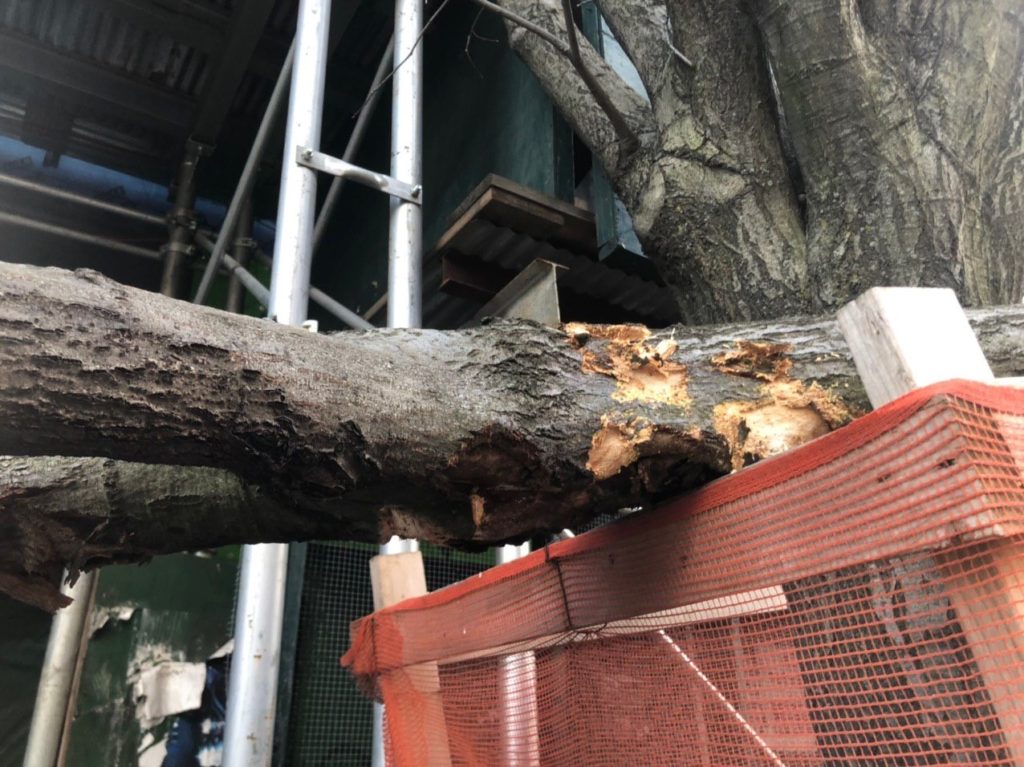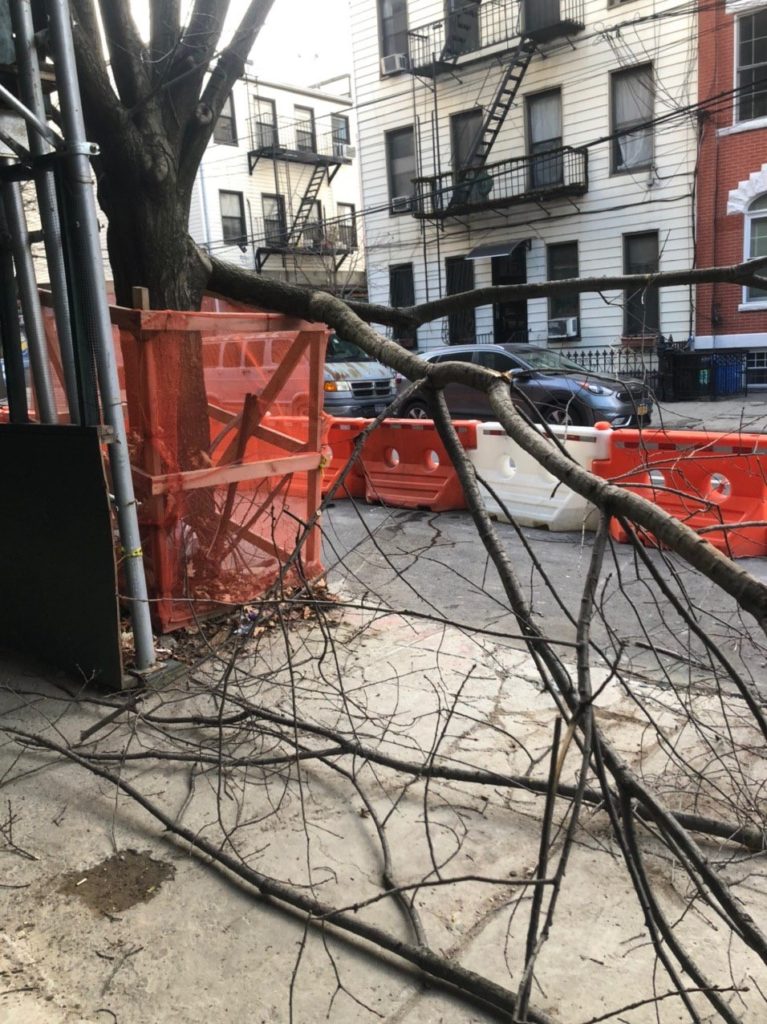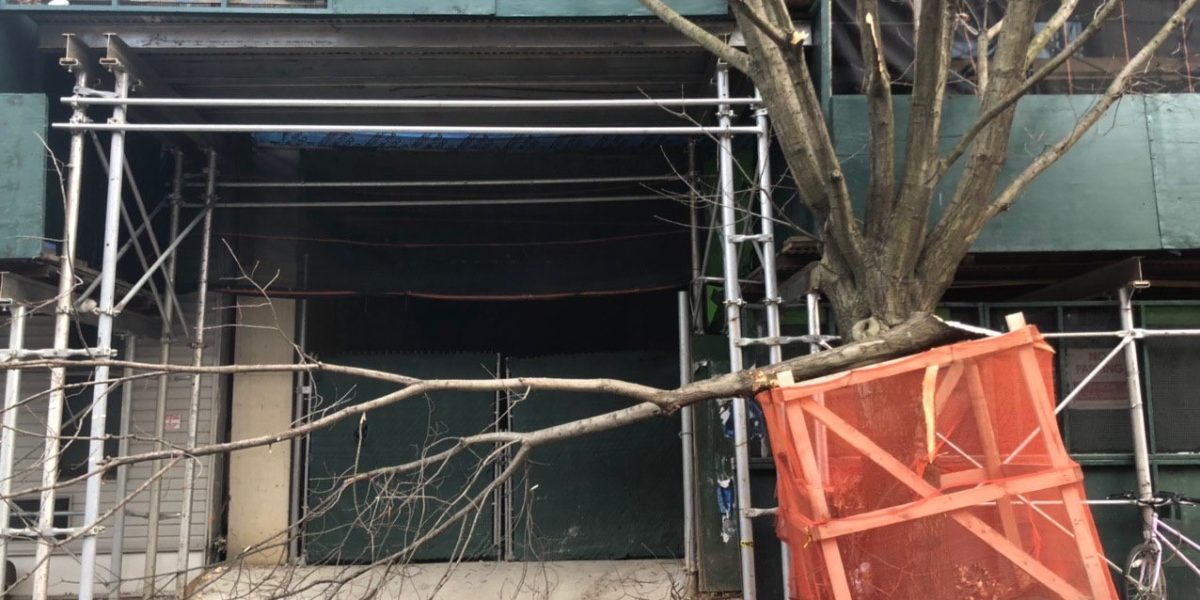A harsh reality hit me hard on the head a month ago. It literally came crashing down on me at the south east corner of Eagle Street and Manhattan Avenue as I was walking home with Ximena, my 10-year-old daughter. It happened quite unexpectedly and abruptly changed the mood of what seemed like the start of a perfect weekend.
I had moved Ximena to my right side after crossing Manhattan Avenue and turning left toward the construction that takes most of the block between Freeman and Eagle. She was laughing, trying to reach my face and cover my mouth as we entered the scaffolding passage; I was being silly, singing nonsense in an embarrassingly loud baritone. And just as I was coming out of the makeshift passage it happened. A brutal knock in the head; the hand of random violence falling from some place above. Ximena was crying and frightened. It took me a second to realize what had happened. My daughter had a cut in her lip and a scratch near her left eye. There was some blood on her face, but she was okay. Then I touched the top of my own head: there was a huge bump, but no blood. I saw the naked branch on the sidewalk, broken at the base; I saw the huge gash on the young Pin Oak trunk.

Then I saw the driver of the truck that had knocked the branch down coming out of the cab. That’s when everything went red. Adrenaline took over and I let my anger go: I uselessly yelled and cursed at the driver, frightening my daughter even more. I called 911. That it had been an accident just couldn’t register with me. That driver and his truck seemed the personification of the destructive side of development. Ximena was still crying as other people rushed to help. A man gave me paper towels for her face. As I was trying to calm down to explain everything to the dispatcher, I saw the face of the driver. He was pale with dread, but he didn’t approach to see if we were okay. Yes, it had been an accident, but a reckless accident caused by the crew of a negligent developer, I told the 911 operator. Ask for an ambulance, people said. But we really didn’t need an ambulance. I just wanted to take my daughter home, clean her wounds and put some ice in my bump, which at this point was reaching a cartoonesque size—my last trip to the ER for a kidney stone had left me with a $5,000 bill after insurance negotiations, so going home and assessing whether to go to the doctor or not seemed like a financially sensible decision.
Finally home, we could appreciate how lucky we had been. My head had a dome like the Capitol’s and Ximena’s little face was scratched and a bit swollen, but we were alive and whole. My daughter wisely put it this way: the living thing that got the worst part in all this was the tree. She was right. Our involuntary aggressor (the irony of this fact did not escape me: a tree, my passion, had knocked us down) had just lost a major limb in the middle of winter. Without help, it might not make it.
A couple of days later, with my bump starting to recede, I went to check on the tree. The ripped branch had left a deep wound on the street side of the young oak. It looked like it might become one of the 36 million trees that fall victim of inconsiderate development across the United States every year. I remembered the sidewalk covered in acorns this past fall— it was one of those bountiful years for Brooklyn oaks. Oak acorn production is not consistent from year to year, a fact that compels precautionary squirrels to bury acorns on the ground, thus lending a hand in the reproduction of this king of temperate forests. Maybe next year, I thought, there won’t be any acorns at all from this injured tree. This made me sad and resentful of all the hyper-development that plagues our neighborhood. Trying to walk around Greenpoint without seeing a construction site would probably be harder than trying to cross Dublin without walking by a pub, something James Joyce once famously claimed would make a good puzzle. Next time you walk past a construction site, do pay attention to the nearby trees. You’ll see that many have suffered injuries because of the hectic construction activity. Also, most new developments remove backyards that, for more than a century, have offered shelter to plant and animal species adapted to the urban environment. Meanwhile, the resulting new buildings do not seem to have any effect on the market: prices continue to surge despite an ever-increasing number of units available in Greenpoint. Real estate economics is not my topic. But trees are, and they are suffering the effects of unnecessary, not socially motivated, development.

I decided to contact my friend Acacia Thompson with the Greenpoint Tree Corps to find out if there was anything we could do to help our injured oak. I took pictures of the wounds and gave her the location. She promptly got back to me with encouraging news. Despite the size and depth of the wound, the tree seemed mature enough to be able to pull through on its own. Then she offered to clean the wound with a hand saw to increase its chances of survival. I thought again about all those acorns on the ground last fall and was sure that Acacia was right about our friend’s age. That young tree must be at least twenty years old—the fast-growing Pin Oaks don’t reach maturity before then. Definitely good news for all of us, including squirrels, sparrows, warblers, sterlings, thrushes, and even the occasional opossums that grace our street with their discreet nocturnal presence. Thankfully, work on that site seems to be almost over—the gigantic, unimaginative box of who knows how many luxury units is now stripped of scaffolding—and that corner will soon be safe again, for trees and people alike.
Pin Oaks like our friend are not as long-lived as other oak species. Still, at least a century of growing lies ahead of this young tree—a whole century of future memories. Like so many living sculptures growing in Greenpoint, it will keep carving out its space in our collective imagination long after this tiring construction boom is no longer a threat to their existence.



